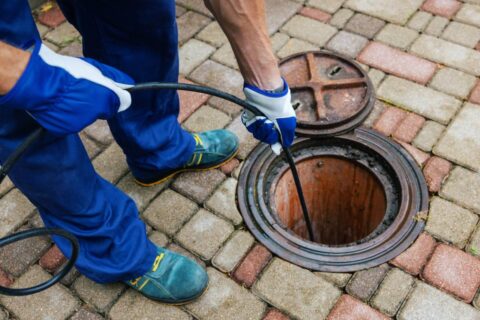How Long Do Pipes Last?
We tend to assume that most of the things on our home behind the walls will just continue to work. It’s out of sight, so it’s out of mind for the most part. But just because you can’t see the pipes in your house, doesn’t mean that they can be neglected. It’s important to keep tabs on how old your pipes are and to keep an eye out for any signs that they may need to be replaced. One of the worst things that could happen to your house is water damage that could have been avoided if only you knew how long pipes last. If you need professional help from one of the best plumbing services, contact New Generation Plumbing to help you today. One question to ask yourself is how long do pipes last?
Different Types of Pipes
There are two different categories of pipes in your house that both serve a specific function. The first category of a pipe is a supply pipe. The name of these pipes is pretty self-explanatory because they essential supply the water to the areas of your house that need it. Because supply pipes are sending water all over your house, they need to use pressure to deliver the water properly. This pressure means that these pipes are under quite a bit of stress.
The typical material used for supply pipes are brass, copper, and galvanized steel. The second category of pipes is the drain lines. These pipes remove the used water from your house. The drain lines are a separate system from the supply pipes because you do not want your clean water to be supplied by the same pipe that your dirty water is flushed. Drain lines essentially used gravity to have the used water run out of the house and away from the freshwater supply. Typically, cast iron and PVC pipes are used for the drain lines.
How Long Do Supply Pipes Last?
Copper pipes will last around 50 years. The longevity of copper is mostly dependent on the chemical breakdown of the water being transferred through it. After 50 years, copper can be susceptible to pinhole leaks and corrosion if the water makeup is harsh. Brass can last anywhere from 40 to 70 years. Because brass is a bit heavier than copper, it usually lasts a bit longer. However, brass does have some copper in it, so it is susceptible to the same corrosion over time. Galvanized steel pipes can last up to 50 years, but can sometimes only last 20 years. The length of time it lasts is dependent on the zinc lined on the inside. If this zinc layer gets worn down, the steel will be exposed to water, which can be damaged quickly. If steel rusts, it can destroy the quality of your water.
How Long Do Drainpipes Last?
Both PVC and cast iron last a long time. Cast iron was the typical material used in drain pipes before the 1960s. Cast-iron drain lines will typically last 75 to 100 years, so there’s little chance you’ll need to replace it in your home. PVC pipe replaced cast iron in the 1960s because it was a cheaper alternative with a longer life span.
Many believe that PVC can be used forever without replacement. However, it has only been widely used since the 1960s, so there is not applicable data to show it lasting more than 60 years as of now. Only time will tell if PVC lasts as long as it is publicized. The good thing about drain lines is that they can become rusted without needing to be replaced. Because their function is to drain dirty water from the house, you only need to worry if a leak forms. They do not need to stay as clean as the supply pipes.
How Do Pipes Last? When Is It Time to Replace Them?
If you want to know how long do pipes last, here are some signs that indicate its time to get your pipes replaced before major damage or harm occurs:
- Discolored water indicates rust, corrosion, and possibly mold growth in your pipes. These can lead to leaks that can damage your house, and sickness if left untreated.
- Low water pressure indicates there might be a leak in the supply pipe.
- Wet spots on your floor, wall, or ceiling are a significant indicator that your pipe may be leaking.
- Slow drainage of water may be due to hair clogging the drain, but it could also indicate a problem with the drain lines. If the top of the clog is clear of debris, and there is still slow drainage of water, you may need to replace the drain pipes.


